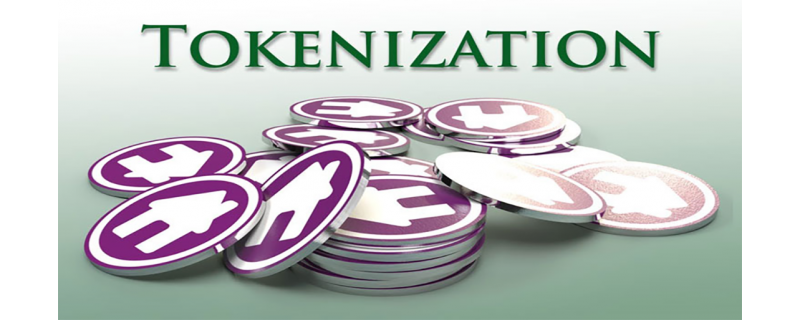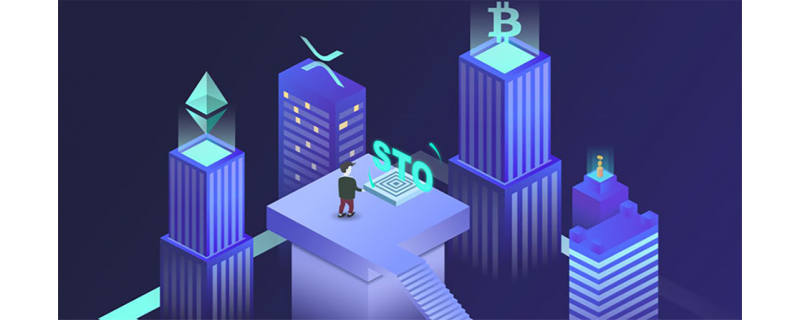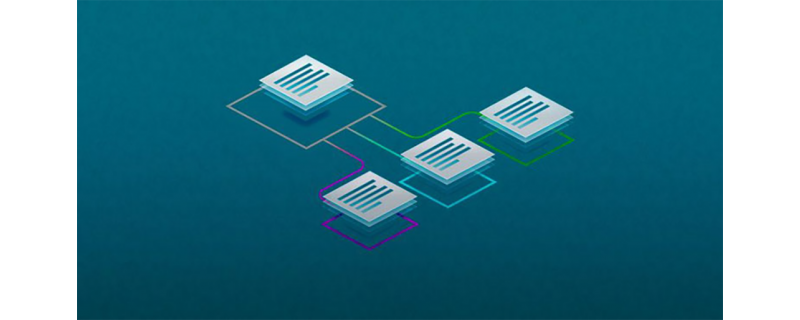Given the lack of a unified classification of crypto assets, the market defines tokenization in several, sometimes conflicting, ways. Tokenized assets are often confused with digital assets proper, such as Bitcoin or central bank digital currencies, and some experts argue that issuing tokenized securities is the next generation of ICOs.
In this article, we will analyze what tokenization is, what its application in business is, and whether it bears any threat to the traditional financial system.
The practical significance of tokenization for society
Tokenization is the process of digitally representing an existing real asset in a distributed ledger. The Financial Stability Board defines tokenization as the representation of traditional assets, such as financial instruments, a collateral basket, or real assets, in the form of tokens. Asset tokenization involves presenting real assets that already exist in a distributed ledger by creating a link or incorporating economic and other rights to those assets into digital tokens issued on the blockchain.
The tokens issued as a result of the tokenization of real assets exist on the blockchain network and contain rights to assets that continue to exist in the “off-chain” world. In the case of tokenization of physical assets, they usually need to be placed in storage in order as a collateral to the issued tokens. This shows the increasing role of the asset storage function in the tokenization process.
The key peculiarity of blockchain tokenization is in how blockchain differs from banks and traditional financial exchanges. All these differences can be summarized in the following seven advantages:
- Fewer intermediaries. Traditional financial transactions involve a huge number of intermediaries. Each of them increases the complexity and cost of the transaction, as well as reduces its security. When tokenizing assets on the blockchain, most of these intermediaries can be removed, since the distribution registry system serves as a “source of truth” that ensures the integrity of the transaction, is responsible for the safe storage of digitized assets and conducts transactions.
- Divisibility of everything. Another key advantage of the blockchain is the ability to divide any asset into an unlimited number of virtual shares, each of which will be represented by a separate token. Thanks to this, it is possible to bring liquidity to the market where it was simply unavailable.
- Immutability. Unlike traditional databases, the information recorded on the blockchain cannot be changed, deleted or “tweaked” by bribing an official or hacking into the system. This is one of the properties of the blockchain architecture, which records information in "layers", blocks.
- Safety. In addition to immutability, data in the blockchain is protected by two more things: cryptography and distribution ledger.
- Automation. Most of the paperwork and bureaucratic procedures on the blockchain can be automated using smart contracts, which are computer algorithms for the autonomous exchange of values, such as fiat money for shares, tokens or real estate.
- Transparency. Almost all blockchains are open source software. In most cases, this means that any user or developer can view the source code of the blockchain.
- Additional features. Asset tokenization using traditional methods creates tokens that can be traded, exchanged and used as collateral. Sometimes, it is possible to manage the company for ordinary (not premium) shares.
Some people think that tokenization is the best thing the blockchain technology has given the world. We asked experts how they felt about the phenomenon and whether they thought that society really needed it or at least was ready to transfer assets to the blockchain.

Oleg Kurchenko, Founder and CEO of Binaryx, says,
“Asset tokenization is a topic that can be discussed for a very long time. This is a very promising tool that can unlock trillions of illiquid dollars. Tokenization provides a huge investment opportunity for businesses and a new tool for retail investors, but the technology is not widely used. The market is young, and there are already quite many cases, and with the development of the market, the number of tokenized businesses will only increase.”
Alex Kontsov, Founder of the international company Involta, believes that tokenization definitely opens up new prospects for business, makes it possible to render work with any assets more democratic, and automate many processes, which is already very positive for society, but to talk about a complete transfer of assets to the blockchain is still very early, if only because most people are not aware of the technology and its products.
The expert notes that only after reaching a high level of awareness and application of technology, one can talk about the prospects and large-scale transfer of assets. It is necessary to secure a transparent system of regulation of the industry, and legislative acts have to be developed that will allow placing assets on the blockchain and eliminate various barriers.
Ignes Terrenas, Head of Communications at crypto exchange Bybit, says,
“Tokenization facilitates scaling and increases liquidity. Without this, physical assets could hardly go further. For written content, or audio content, or visual content to be accessible to, say, a couple of hundred million people, physical books, CDs, and DVDs would suffice. But in order for the same content to be simultaneously available to two billion, it’s definitely not enough to have the analog content, you need to “dematerialize” (digitize) it, and you need services such as Kindle, Spotify or Netflix. Tokenization is a logical next step towards dematerializing physical assets and moving them freely on blockchain technology so that more people can participate in the market and the whole system can be made more democratic and inclusive.”
Maria Lavnik, a crypto investor, marketing expert, article writer and editor at investonomic.ru, agrees that tokenization is indeed a very important technology. Tokenization refers to the issuance of a token that is tied to a specific product or service. When moving a token from one person to another (or from one company to another), the transfer of rights to a service or product actually occurs. The main value of tokenization lies in the fact that the transfer of these rights occurs almost instantly, bypassing many difficulties and legal delays.

Regarding whether the society needs it, the expert says,
“It definitely needs it. Take, for example, the procedure for transferring a car from one owner to another. Today, this is a long and rather complicated process, which, thanks to tokenization, could take place in a matter of seconds. This also applies to transactions with real estate and other assets: household appliances, furniture, etc. But the speed of the transaction is not the only advantage of tokenization. Thanks to tokens, we can view the entire history of an asset: to whom and when it was transferred, for what price it was sold, etc. Thus, transactions become more transparent and secure. For example, we buy a refrigerator. Using the token linked to this refrigerator, we can look at the real manufacturer, the transport company that transported it, make sure that the refrigerator is not counterfeit, and much more. Society seems ready for such changes.”
Viktor Dorokhov, teacher-practitioner of the Digital Economy program at RUDN University, thinks the same and believes that tokenization is a truly powerful way to prove ownership. The expert notes that you need to understand that this is just a record of the blockchain with high data reliability. Therefore, it is not entirely correct to measure this category in terms of society's readiness: the only thing that matters is the adoption of standards at the state level.
Dmitry Noskov, an expert at StormGain, a platform for trading, buying and storing cryptocurrency, says,
“This process has become expedient in society, and it really needs it. Tokenization has a huge number of advantages arising from the transfer of assets and processes to digital form (convenience, speed of operations and their reliability). Blockchain technology is still unknown to a number of segments of the population, but the change will happen faster than it seems: remember how long it lasted for online banking.”
Chen Limin, CFO and Head of Trading at ICB Fund, believes that tokenization opens a new page in the evolution of the economy and financial markets. Tokenization has no boundaries, any asset that is currently difficult to digitize can be transferred to the blockchain, not only precious metals and works of art, in other words, real fungible and non-fungible assets, but also various intangible assets, in particular patents and copyrights.
At the same time, the expert notes that thanks to tokenization, the owners of these assets receive liquidity, and investors receive a significant expansion of opportunities for diversifying investment portfolios. The transformation of financial markets with the transfer of trading to the blockchain looks inevitable, although it will take decades due to current technical and regulatory restrictions, as well as the slow adoption of the technology by investors.
Danatar Atajanov, Brand Manager at OXLY.IO, says,
“Tokenization could and did exist without the blockchain. It's just that blockchain, due to its nature—transparency, decentralization—allows you to tokenize businesses and assets more securely. The digital economy puts forward new requirements for the existence and circulation of information. This is what society and business need. Yes, it is in demand, otherwise we would not see the explosive growth of the technology.”
Tokenization and business
Tokenization has found a wide application in business. We asked experts what they could say about the advantages and disadvantages of business tokenization.
Oleg Kurchenko says,
“In short, asset tokenization has the following advantages: speed and ease of use, security and, of course, availability. Compared to other ways of financing a business, tokenization is a fast track, devoid of bureaucratic hell. The security of transactions between companies and investors is controlled by the algorithm, and the path between the parties is reduced to a minimum.
“Now let's discuss the disadvantages. The main problem of the industry is insufficient regulation. This problem concerns not only tokenization, but the whole industry. But the governments of the EU, the US and other advanced countries are already moving in this direction, and this issue will be resolved in a few years. The second difficulty is the number of investors willing to invest in your business. Tokenization is aimed primarily at financial support from a loyal community. If your business does not win the hearts of retail investors, it will be difficult to attract the necessary investments.”
Chen Limin notes that for businesses, tokenization has become a continuation of securitization and financialization. The expert reminds, however, that if earlier, to obtain a listing for an asset, significant costs were required for creating infrastructure, primarily due to the intermediaries who guaranteed settlements for transactions made, then thanks to the blockchain, which establishes trust with the help of smart contracts, the need for them has disappeared, as well as the listing itself with a centralized counterparty. This significantly reduces barriers and allows virtually any asset to be brought to the market—not only real estate, which can now only be in the form of REIT (Real Estate Investment Trust) investments or part of packaged tranches, but also shares in private businesses and exotic formats such as licensing rights to musical works. The threshold for entry has also been lowered for investors due to a decrease in transaction costs, as well as due to the ability to divide an asset into components in the form of tokens.
Chen Limin gives a specific example, saying,
“On the Singaporean digital exchange of DBS bank, you can buy tokenized bonds starting from 10,000 Singapore dollars ($7,600), while in the traditional financial market this amount starts from $200,000. Tokenization also makes it possible to trade around the clock like cryptocurrencies—this reduces price gaps and volatility of quotes, which attracts investors.”
The expert supposes that the existing shortcomings of the technology are associated with its immaturity. He says,
“This also manifests itself in the absence of the necessary regulatory framework (relevant laws came into force relatively recently in Japan, Switzerland and Liechtenstein), forcing startups to operate in a gray area, which can lead to their closure (TOKENY in Europe). There is no single integrated solution for issuance, storage, settlement, provision of liquidity and trading, which is again partly due to gaps in legislation, but work is underway in this direction (Securitize). Another key problem is the lack of liquidity, which is a consequence of the reasons already mentioned. Even in the market of tokenized popular stocks like Tesla on websites such as Binance and FTX, it does not exceed $1 million (daily), not to mention the industry as a whole. The specialized resource Security Token Market estimated trading activity on security token marketplaces in July at only $5.55 million ($8.23 million in June)!”

Alex Kontsov believes that most of the shortcomings of tokenization are temporary. With the advent of standardization and the development of legal infrastructure, as well as solutions for private investors and institutional ones, the disadvantages will largely be leveled. At the same time, the expert notes that the advantages of tokenization lie in the reliability and immutable structure of the blockchain, and it will also help to automate many processes, for example, transfer of rights or investment.
Maria Lavnik says,
“I cannot agree that tokenization has found a wide application in business. I would even say that tokenization is at the initial stage of implementation in business. First of all, this is due to some legal details. So, if we link a token to a specific product or service, then there must be a special legal procedure established at the legislative level that describes in detail the tokenization process. At the moment, such regulation is absent in most countries or is in a rather immature state. However, already today there are companies that are engaged in the tokenization of assets and use it to improve their business.”
As for the advantages and disadvantages, according to the expert, the first and one of the main advantages of tokenization is the acceleration of all processes associated with the movement of goods. The second is the transparency of such movement: all participants in the transaction see the movement of goods or the process of forming the service itself. The third is the reduction in the cost of the process of tracking goods.
Maria Lavnik adds,
“Here we can cite as an example the Mercury system, which is used by the Federal Service for Supervision of Consumer Rights Protection of Russia (Rospotrebnadzor) to control the import of products into the territory of the Russian Federation. Mercury requires the installation of special equipment—barcode readers, as well as the maintenance of a single database for all subjects of control, which makes the introduction of this system a very complex and expensive procedure. Controlling the movement of tokenized assets can be hundreds or even thousands of times cheaper.
“Speaking about the shortcomings, first of all, the lack of legislative regulation of tokenized assets is worth mentioning. It may not be clear to regulators how your token aligns with your product or service. And in my opinion, this is the key drawback of tokenization today.”
Margo Pazhynskaya, financial analyst at the DotBig investment platform, notes that tokenization is now actively used in business. Russian companies such as M.Video, Sberbank Factoring, Alfa-Bank and many others are actively implementing blockchain platforms that help them solve a variety of business problems.

The expert adds,
“Blockchain has many advantages: it offers convenient tools for optimizing various business processes. The technology is most effectively used by large companies with a wide audience and a large number of suppliers to provide the necessary control. With proper implementation, blockchain can be used in various areas: to identify the authenticity of a product, save reliable information, make secure transactions, and so on.
“Disadvantages can be identified with irrational use, when the main features of the blockchain are ignored. It is also worth considering that the development of the project includes certain algorithms and protocols, deviation from which disrupts the system and provokes vulnerability to hacker attacks. In addition, the technology still needs to be improved because of problems with manageability and scalability, which complicates the work of smart contracts.”
Danatar Atajanov believes that the main advantages of tokenization are security and ease of information management. Transactions and the movement of information are easily tracked, while the speed of transactions is much higher than traditional systems. Tokens can help businesses develop by solving the problems of attracting customers and investors. Also, according to the expert, one of the main drawbacks is the immature legislative base that hinders the development of technology.
Viktor Dorokhov says,
“In this case, the disadvantages fade before the advantages. The disadvantages are, as always, a technological barrier to adaptation, as well as the lack of a clear legal status of smart contracts. But as we can see, the disadvantages are associated only with the early stage of technology. Benefits enable a fair and clear distribution of shares and the implementation of procedures for transferring ownership, reducing the cost of litigation, and much more.”
Dmitry Noskov believes that the advantage of business tokenization is an increase in the liquidity of an asset in the event of its tokenization. It leads to lower entry barriers for investors and diversification of their portfolios. Another advantage, according to the expert, is the automation of business processes, the ability to track all transactions and speed up calculations. This also includes the impossibility of falsifying data, easier confirmation of ownership and tracking of all changes.

The disadvantages given by Dmitry Noskov include the lack of uniform standards, and difficulties in the interaction between tokens of different companies, especially at the international level, in different states with different legal regulations.
Is tokenization the killer of the economy?
It is believed that the potential spread of asset tokenization in financial markets could have implications for liquidity, but could also affect trading, pricing, clearing and settlement of securities, and even monetary policy.
The following consequences can be expected:
- A hit on trade. The participation of a central institution or an intermediary is no longer required to handle the relationship between the parties to the transaction. Investors can act as broker-dealers for themselves, and transactions are confirmed by members of the decentralized network in exchange for a fee.
- Impact on market makers. They are simply not needed. Theoretically, the search for buyers and sellers in a decentralized securities market is automatic, and no intermediary is required.
- "Destruction" of the repo market. The development of asset tokenization may also have an impact on repo transactions to finance stakes, as well as on securities lending operations used as a component of trading strategies. Moving the above activities to the blockchain could potentially lead to faster and less costly securities lending, as there are fewer steps involved in the process and the realization of collateral is instantaneous.
- Liquidity implications. In a tokenization popularization scenario, the number and variety of assets that traded on public markets and receiving liquidity could grow, especially given that theoretically any asset can be tokenized.
- Implications for pricing. Trading in a tokenized environment will benefit from the increased transparency provided by DLT-based networks. An important benefit of increased transparency is the reduction of information asymmetries, which, in turn, can improve the pricing mechanism, providing incentives for investors to increase their participation and provide additional liquidity in the market, as well as improve the conditions for competition in the market. However, the increased level of transparency inherent in blockchain trading may not appeal to participants in the markets where anonymity matters.
- Impact on central bank currencies. For securities to settle in near real time and for delivery against payment (DvP) to be guaranteed, securities and cash must change hands at the same time. In order for the exchange to be made quickly or without the cost of intermediaries, it is necessary to ensure the presence of a tokenized form of money in the blockchain. Since tokenized securities are already on the blockchain, having a tokenized form of money allows for certainty about the delivery of securities and allows for near real-time settlement. In the absence of tokens of currencies supported by Central Banks, stablecoins are used for settlements in DLT to provide the monetary component of settlements. Stablecoins are also used by cash settlement platforms when it comes to servicing securities and corporate actions throughout the life of a security (such as paying dividends). This raises the question of whether Central Banks will promote the tokenization of central bank money for use in tokenized markets, or whether stablecoins (or central bank digital currencies if they become available) will play this role.
We asked experts if they agreed that the global tokenization of the economy could completely destroy financial markets.
Oleg Kurchenko, Founder and CEO of Binaryx, sees no threats. He believes that tokenization will help the market evolve faster. He says,
“I sincerely believe in the beneficial effects of asset tokenization on the economy. Thanks to the development of the blockchain, the stock market, in its traditional form, may soon become history. Securities are being digitized, paving the way for tokenized shares. Smart contacts are replacing traditional contracts, and transactions can be carried out faster, without intermediaries in the form of banks and lawyers. The world is changing, and traditional markets are transforming with it.”
Alex Kontsov, Founder of the international company Involta, is confident that destruction will not happen. The market is adapting and may assume a hybrid model of decentralization and custodial public instruments. Regulators in any case will not allow any pivotal or fast changes. According to the expert, judgments about global changes in the economy are very premature today. Too many questions remain unresolved. New technologies and methods are already on the doorstep, but no one will let beginners "open the door with their feet."
Danatar Atajanov, Brand Manager OXLY.IO, says,
“I disagree. Like any technology, tokenization will go through its life cycle, gradually developing and integrating into traditional systems, giving them dynamics, and at the same time, not depriving them of stability.”
Maria Lavnik, a crypto investor, marketing expert, as well as an article author and editor of investonomic.ru, says,
“As for the destruction of financial markets, to my mind, this is an exaggeration. Global tokenization, however, can have a certain impact on the economy, and primarily on the labor market. After all, where thousands of people were needed before, now hundreds, and maybe tens, will be needed. This will lead to a significant reduction in jobs and an increase in the number of the unemployed. But this problem is much more global and concerns automation in general, and not just the tokenization of assets. This is an issue that is constantly discussed in the government offices of many countries and is currently a deterrent to the global automation of human labor. Obviously, tokenization will also face this problem.
“As for any other consequences, suppose a company issued a token, but did not provide it with a product or service. By and large, this is tantamount to how, after concluding a contract for the supply of products, one of the parties takes the money, but does not deliver the products. However, this problem already exists in real business, so there should not be a significant impact on the economy. Probably, this can become a headache for law enforcement agencies, but I do not think that such precedents will be widespread. Most likely, initially there will be many players on the market, and then, as in any business, trusted leaders will appear—and all questions about liquidity and supply of goods will be eliminated.”
Margo Pazhynskaya, a financial analyst at the DotBig investment platform, believes that the destruction of financial markets due to tokenization is unlikely. The expert notes that in the context of the pandemic, the process of introducing blockchain into business has noticeably accelerated. Also, according to forecasts, this system can provoke the growth of world GDP by $1.76 trillion by 2030.

Victor Dorokhov, teacher-practitioner of the Digital Economy program at RUDN University of Russia, also sees no threats to the economy. He says,
“More likely no than yes. It all depends on the application of technology. Tokenization also has levels of penetration: proof of company ownership is one story, P2P trading is a completely different story, but it is important to understand the need and feasibility from a technical point of view. At some stage, some approaches may turn out to be simply irrational, and all participants will unanimously refuse them.”
Chen Limin, Financial Director and Head of Trading at ICB Fund, is confident that global regulators will not allow the scenario of the destruction of financial markets by new technologies, if only because the capitalization of circulating assets is tens of times higher than real GDP. The expert notes,
“For instance, in the Paxos Settlement Service currently being developed, which allows settlements on securities and exchange-traded assets on the day of the transaction, and not in the T + 2 mode characteristic of the current time, the SEC (U.S. Securities and Exchange Commission) limited their volume. With the help of the same mechanism, which, by the way, will be applied to national digital currencies, stress for financial markets, the banking system and the need to drastically change monetary policy can be avoided.
“The second reason for the almost nil probability of such a scenario is that the main players working in this direction are the same leading financial institutions that have recognized the potential of the technology and are not ready to lose their competitive positions. All of them, one way or another, either created the appropriate blockchain divisions within their operating structure or (and) invested in various startups that they can completely buy out in the future. Financial markets will not be destroyed, but will switch to new blockchain rails, and this process may take more than one decade.”
Dmitry Noskov, an expert at StormGain, a platform for trading, buying and storing cryptocurrencies, thinks the same. He believes that, most likely, financial markets will simply transform and acquire a slightly different, more modern look. The expert notes that large companies, payment systems (Visa, Mastercard) and even entire states are beginning to be interested in blockchain technology today (for example, China is considering launching its own cryptocurrency). All this indicates that the world is becoming more focused on the transfer of assets to digital form.








